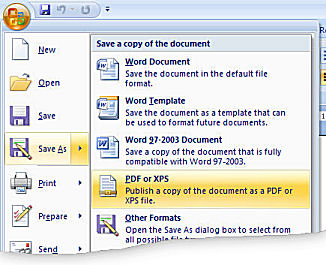

In the Attach Template dialog box, please (1) open the folder containing the personal template you will apply, (2) select the specified personal template, and (3) click the Open button.
#MICROSOFT WORD TEMPLATE UPDATE#
In the new opening Templates and Add-ins dialog box, please check the Automatically update document styles option, and click the Attach button. In the Word Options dialog box, please (1) click Add-ins in the left bar, (2) select Templates from the Manage drop down list, and (3) click the Go button. Open the Word document you will apply template to, and click File > Options to open the Word Options dialog box.Ģ. You'll avoid distributing unforgotten garbage and attributes that could come back to haunt you later.Please follow below steps to apply or change the Word template to your existing Word document.ġ. In either of these cases, take the extra time to start from scratch. I don't recommend this route for development or templates you plan to distribute to others. If trouble arises, you're the only one that has to deal with it and the template might work fine. If you want to base a template on an existing document for your own use, go ahead. Always base a new template on a template file (as shown above).Don't base a new template on a new document file.Don't base a new template on an existing document.In short, it only seems like there are several ways to create a new template. Then, click Template in the Create New section.


It's usually best to start a new template from scratch, as follows: Well, of course it is, and that's great for your new documents, but probably not a new template. (Don't forgot to change Normal.dotm's font color back to Automatic.) In addition, don't forget all the other customizations you've made that aren't even visible in a new document! Now, press +n to open a new document and start typing - the text will be in the color you just choose for Normal.dotm. Save Normal.dotm (Normal.dot) and close it.

Right-click Normal in the Styles gallery and choose Modify.In Word 2003, you'll probably find Normal.dot in Documents and Settings\Administrator\Application Data\Microsoft\Templates. In the Open dialog, click Trusted Templates. To illustrate this seemingly innocuous behavior, do the following: Any customization will show up in your new template and its offspring. Your new template and its offspring will be based on your current (and probably somewhat customized) Normal template. You might also consider creating a template by opening a new document the way you always do and then saving it as a template file - but don't do this either. All those little attributes and attempts at things that you tried, things you didn't complete, but didn't delete - all of it ends up in every new document. The best way to create a template is to start fresh, even though that might seem inefficient. Your new template, and consequently, any new documents you base on that template, will start life with whatever garbage the original document acquired during its lifetime. If you've worked hard to format a document just right, you might be tempted to use that document as a template, but don't.


 0 kommentar(er)
0 kommentar(er)
